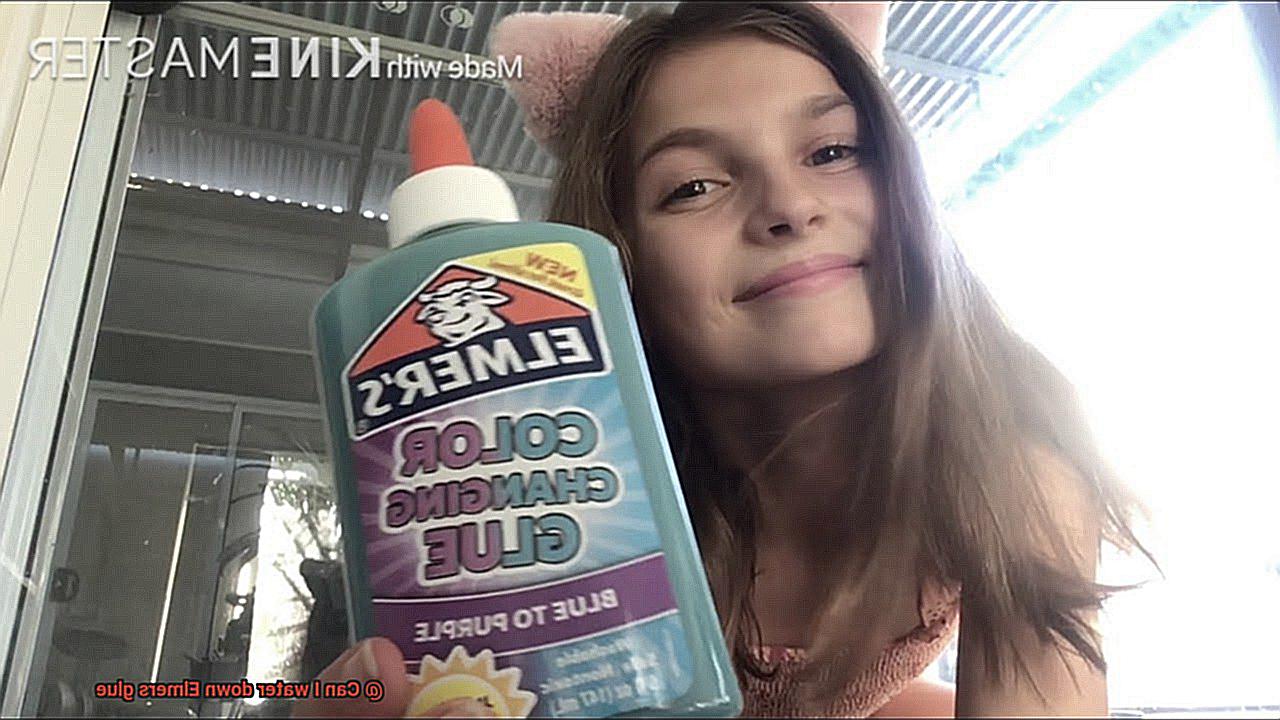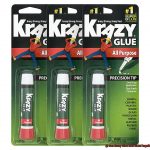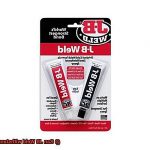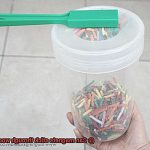Are you a fan of arts and crafts? If so, you’re likely familiar with Elmer’s glue. This versatile adhesive is a go-to for school projects, DIY decorations, and household repairs. But what if you could make it even easier to work with? Or stretch it out for more use? The answer is simple: water it down.
Yes, you read that right – watering down Elmer’s glue can be a game-changer for crafters and artists alike. It allows for certain effects and adjustments to consistency that can take your project to the next level. However, not all types and formulations of glue react the same way to water.
Before you start diluting your Elmer’s glue, there are some things you need to know. In this blog post, we’ll explore everything from how it works to what you can use it for and what to watch out for. Whether you’re an experienced crafter or just starting out, this informative article will provide valuable insights into the world of watered-down Elmer’s glue.
So, get ready to unleash your creativity and discover the possibilities of this simple yet effective technique.
With our helpful tips and tricks, you’ll be well on your way to crafting masterpieces like never before.
What is Elmer’s Glue?
Contents
- 1 What is Elmer’s Glue?
- 2 Can You Water Down Elmer’s Glue?
- 3 Benefits of Watering Down Elmer’s Glue
- 4 Considerations When Watering Down Elmer’s Glue
- 5 How to Water Down Elmer’s Glue
- 6 Potential Disadvantages of Watering Down Elmer’s Glue
- 7 Tips for Using Thinned-Out Elmer’s Glue
- 8 Projects That Benefit From Thinned-Out Elmer’s Glue
- 9 Conclusion
When it comes to adhesives, Elmer’s Glue has been a household name since 194This white, non-toxic, water-based glue is a go-to for school projects, DIY crafts, and everyday household repairs. But what exactly is Elmer’s Glue?
Elmer’s Glue is made from polyvinyl acetate (PVA), a synthetic polymer commonly used in adhesives. Its water-based formula dries clear and can be easily washed off with water, making it perfect for children’s projects and cleanup. The glue was named after a bull terrier owned by the company’s founder, Gail Borden Jr., who wanted to convey the message of strong bonding.
What sets Elmer’s Glue apart is its versatility. It comes in various types to fit different needs. For instance, the washable variety is ideal for kids’ projects as it can be easily cleaned with soap and water. Clear glue is perfect for situations where you want the glue to be invisible once it dries, while glitter glue adds a fun touch to crafts. And for Halloween decorations, glow-in-the-dark glue is a must-have.
One question that often arises when using Elmer’s Glue is whether it can be watered down. Yes, it can be thinned out with water because it is water-soluble. But be careful not to add too much water as it can weaken the adhesive properties of the glue, making it less effective at sticking things together.
Thinning out the glue can be useful for specific projects such as paper mache or creating a smooth finish on surfaces like wood or cardboard. However, for heavy objects or bonding materials like metal or plastic, it’s best to use the glue at full strength.
It’s also worth noting that watering down Elmer’s Glue can affect its drying time. Thinner glue will dry faster than full-strength glue, which may be an advantage or disadvantage depending on the project. If you need a longer working time, it’s best to use the glue at full strength.
Can You Water Down Elmer’s Glue?
Elmer’s glue has been a go-to adhesive for over 70 years. Made of a polyvinyl acetate (PVA) emulsion, it’s water-soluble, which means you can indeed water it down to make it more liquid. But the question is, can you maintain its adhesive properties when you do so?
Yes, you can water down Elmer’s glue, but there are some considerations to keep in mind. When you add water to the glue, you essentially weaken the adhesive properties of the PVA emulsion, thus affecting its bonding strength. It’s essential to note that watering it down may not be ideal for certain projects that require a strong bond such as woodworking or metalworking.
Additionally, the amount of water added to the glue affects its consistency and drying time. Too much water will make it too thin and runny, making it challenging to control and apply. Conversely, inadequate water will make it too thick with a more extended drying time.
To get the perfect consistency when diluting Elmer’s glue, start with small amounts of water and gradually add more until you reach your desired consistency. You can use a ratio of approximately 1:1 (equal parts glue and water), or adjust as needed.
Benefits of Watering Down Elmer’s Glue
Well, there’s a solution that can make your life easier. Yes, that’s right – watering down Elmer’s glue can provide several benefits that can enhance the efficiency and effectiveness of your crafting process.
Let’s dive deeper into the advantages of watering down Elmer’s glue.
Easier Application
One of the most significant benefits of diluting Elmer’s glue is that it becomes easier to apply. Thick glue can be challenging to spread evenly, causing frustration and wasted time. However, by adding water to the mix, the glue becomes thinner and more fluid, allowing for a smoother application process. This benefit is particularly useful for intricate projects that require precision-based work or delicate materials such as paper or fabric.
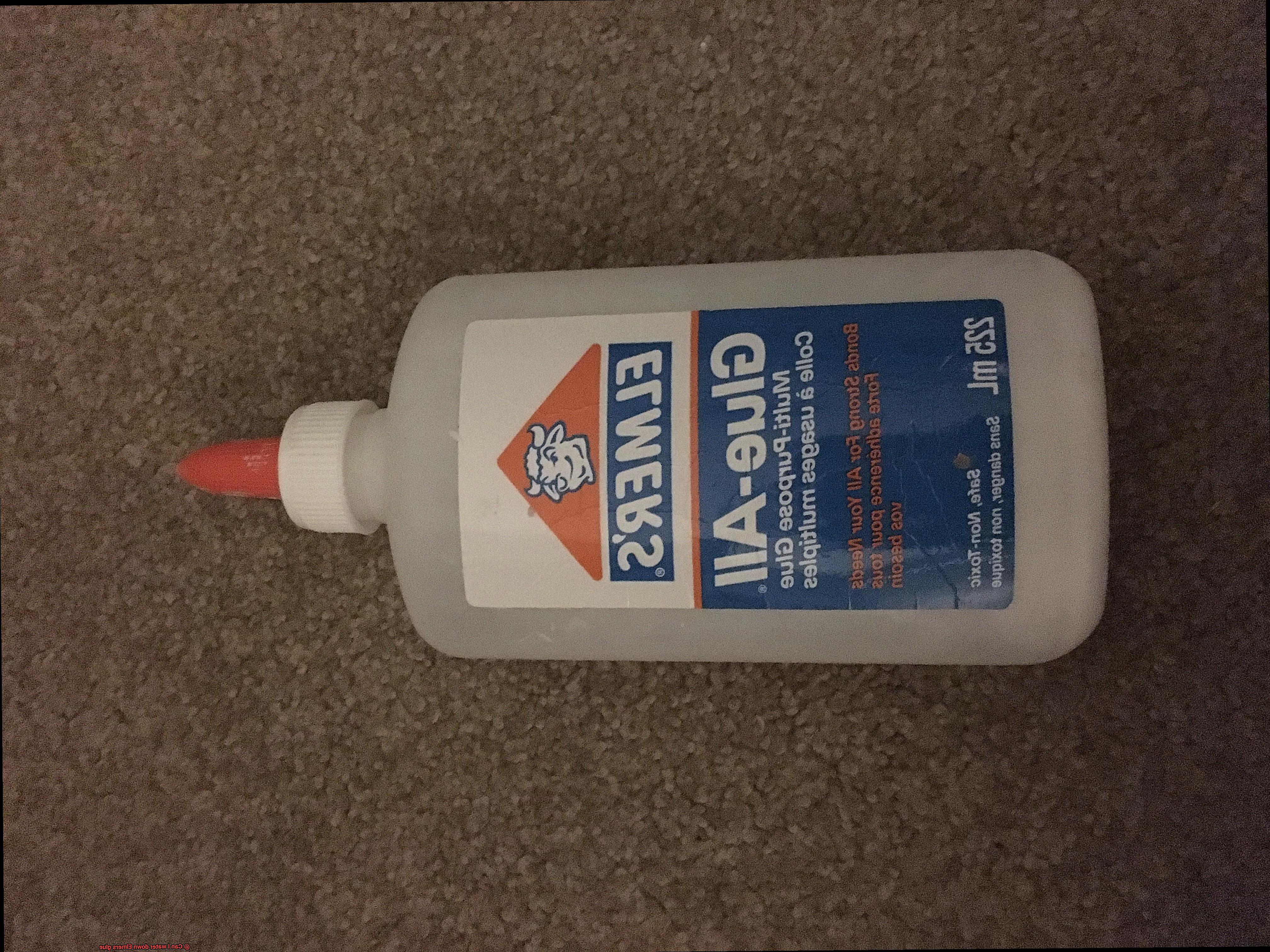
Faster Drying
Another significant advantage of watering down Elmer’s glue is that it can speed up the drying process. Thick glue can take longer to dry completely, especially when used in multiple layers.
However, by thinning out the glue with water, it reduces the time required for it to dry fully. This saves you time and hassle and allows you to move on to the next phase of your project quickly.
Cost-Effective
Lastly, diluting Elmer’s glue can be cost-effective. By adding water and stretching out the glue, you can cover a larger area without using as much product overall. This means you can use less glue while still achieving great results, ultimately saving you money on supplies.
Considerations When Watering Down Elmer’s Glue
Before you dive in, there are several important factors to consider. As an expert on this topic, let me share some insights to help you make the most of your project.
Firstly, it’s crucial to understand why you’re watering down your glue. Whether it’s to create a thinner consistency for easier spreading or to extend the life of the glue, diluting it can be beneficial. However, keep in mind that this can impact its adhesive properties, potentially causing it to stick less effectively or dry more slowly than the undiluted version.
Another critical consideration is the type of project you’ll be working on. Diluting the glue may make it harder to control and apply evenly for precision projects, while larger-scale projects like papier-mâché could benefit from a more fluid consistency for easier coverage.
When it comes to the ratio of water to glue, precision is key. Adding too much water can result in a runny consistency that’s difficult to work with and could diminish the effectiveness of the adhesive. Start by adding small amounts of water and gradually increase until you achieve the desired consistency.
How to Water Down Elmer’s Glue
Here, we will discuss the steps required to water down Elmer’s glue and achieve the perfect consistency for your next crafting adventure.
Step 1: Gather Your Supplies
Before you begin, make sure you have all the necessary supplies. You will need a container to mix the glue in, a measuring cup, water, and of course, Elmer’s glue. It’s important to note that not all types of Elmer’s glue can be watered down. Stick with the standard white school glue or clear washable glue.
Step 2: Measure and Mix
Measure out the amount of glue you want to dilute and pour it into your container. Then, add small amounts of water at a time, while stirring the mixture with a stick or spoon. Keep adding water until you reach the desired consistency. Be patient and mix thoroughly to ensure there are no clumps.
Step 3: Test the Consistency
It’s always a good idea to test the consistency before using your newly diluted glue on your actual project. Apply the glue onto a scrap piece of paper or material and observe if it spreads easily or if it’s too thin. If it’s too thin, add more glue to thicken it back up.
Step 4: Consider Your Project Needs
It’s important to keep in mind that watering down Elmer’s glue can affect its adhesive properties and drying time. Thinner glue dries faster than full-strength glue, so it may be an advantage for some projects but not for others. If you need a longer working time for your project or require a strong bond, consider avoiding watering down the glue.
Step 5: Store Properly
Once you’ve achieved your desired consistency, make sure to store your watered-down Elmer’s glue in an airtight container. It should be used within a reasonable amount of time to ensure its effectiveness.
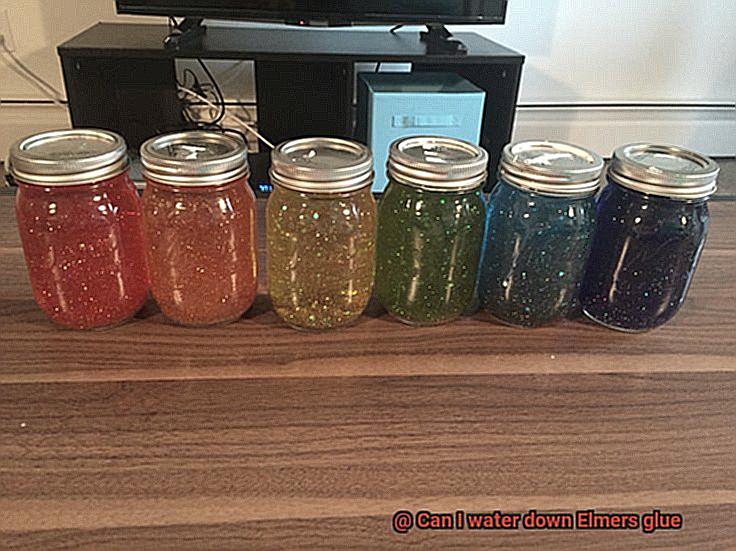
Potential Disadvantages of Watering Down Elmer’s Glue
You may be considering watering down your Elmer’s glue, but it’s important to consider the potential disadvantages before doing so. As an expert on this topic, I have compiled research notes to help you make an informed decision.
First and foremost, watering down Elmer’s glue can weaken its adhesive properties. This means that the glue may not bond as strongly to surfaces and may be more prone to peeling or cracking over time. If you’re working on a project that requires durability or longevity, watering down the glue may not be the best option.
Additionally, watering down Elmer’s glue can alter its consistency and texture. It may become thinner and more difficult to control, making it challenging to apply evenly. This can result in a sloppy or uneven finish, which is especially problematic for projects that require precision or neatness.
Another potential disadvantage of watering down Elmer’s glue is that it may affect the color of the finished product. If the glue is being used for a project where the color of the glue matters (such as papier-mâché), diluting it can result in a lighter or less vibrant final product. This is because the water can dilute any pigments or dyes in the glue, resulting in a less saturated color.
Finally, watering down Elmer’s glue can also impact its drying time. Depending on how much water is added, the glue may take longer to dry or may not dry at all. This can be problematic if the project needs to be completed in a timely manner or if the glue needs to be dry before moving on to the next step of the project.
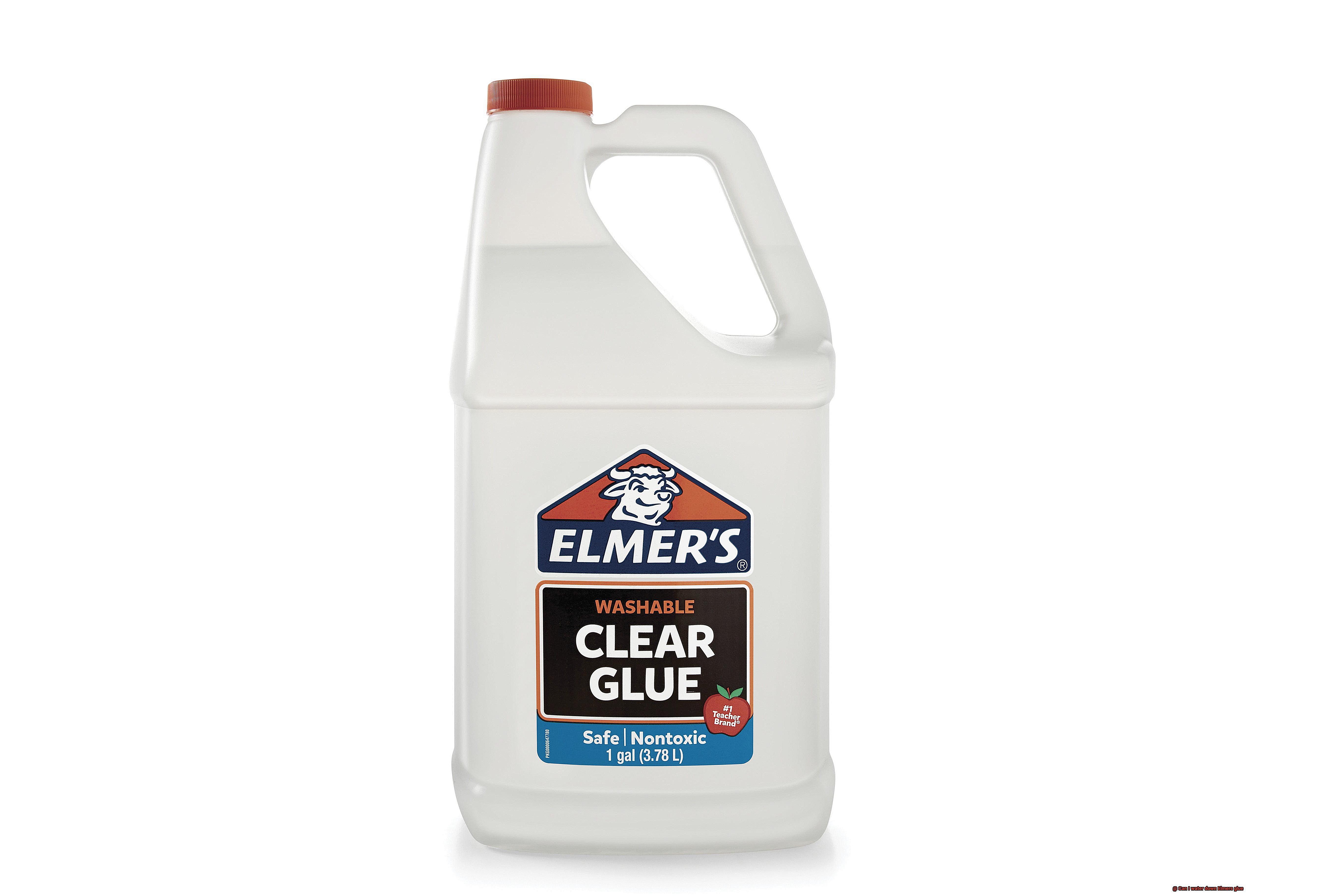
Overall, while watering down Elmer’s glue may seem like a quick fix for achieving the perfect consistency or transparency, there are potential disadvantages that should be taken into account before doing so. It’s essential to consider your project’s specific needs and determine whether watering down the glue is truly necessary and worth any potential drawbacks.
Tips for Using Thinned-Out Elmer’s Glue
Thinning out Elmer’s glue can be a cost-effective solution for your projects. But how do you make sure you get the most out of your thinned-out glue? Here are some tips to keep in mind:
Measure Accurately
To achieve the perfect consistency, it’s essential to measure the water and glue precisely. Grab a measuring cup or spoon and be sure to follow the instructions carefully.
Add Water Gradually
Resist the temptation to dump all the water into your glue at once. Adding water gradually will help you avoid making the glue too runny or too thick. Add water slowly until you reach the desired consistency.
Stir Well
Once you have added water, stir the mixture well. Use a stir stick or a flat spatula to ensure that the glue and water are fully mixed. This will help you avoid clumps in your mixture.
Test the Consistency
Always test your thinned-out glue before using it on your project. Apply a small amount to a test area first to ensure that it is the right consistency for your needs.
Store Properly
If you have leftover thinned-out glue, store it in an airtight container to prevent it from drying out. Be sure to label the container clearly so that you don’t accidentally use it in its thinned-out state for a future project where you need full-strength glue.
When applying thinned-out Elmer’s glue, use a brush or sponge instead of pouring it directly onto your project. This will help you achieve a more even application and prevent the glue from pooling or dripping. It’s also important to keep in mind that thinned-out glue may take longer to dry than regular glue. Be patient and allow ample time for the glue to fully dry before moving on to the next step of your project.
Projects That Benefit From Thinned-Out Elmer’s Glue
Well, look no further than thinned-out Elmer’s glue – because it’s a game-changer for many different types of projects.
Let’s start with paper mache – a classic craft that involves layering strips of paper over a form and coating the layers with glue. But if you’ve ever tried to do this with regular glue, you know how frustrating it can be. That’s where thinned-out Elmer’s glue comes in. By adding water to your glue, you’ll create a smoother, more even consistency that’s much easier to apply.
Plus, thinned-out glue dries faster, which means less waiting time for each layer to dry before moving on to the next.
Another type of project that benefits from thinned-out Elmer’s glue is decoupage. This technique involves gluing paper cutouts onto a surface and coating the whole thing with a sealant.
To make the process easier, using thinned-out Elmer’s glue as an adhesive is recommended. It’s easy to apply and dries clear, which means your finished product will look polished and professional. Plus, using thinned-out glue means your paper cutouts will lay flat and stick evenly to the surface.
If you’re a fan of mixed media art, then collage is likely one of your go-to techniques. However, collaging can be tricky if you’re using regular glue – it can get messy and uneven quickly. That’s where thinned-out Elmer’s glue comes in. By thinning out your glue, you’ll be able to apply it more evenly to your materials, which means your finished collage will look cohesive and well put together.
Also Read: Is Elmer’s Glue Waterproof?
Conclusion
In conclusion, diluting Elmer’s glue can be a game-changer for crafters and artists alike. This simple technique allows for adjustments to consistency and certain effects that can take your project to the next level. However, it’s important to note that not all types and formulations of glue react the same way to water, so understanding why you’re watering down your glue is crucial.
Thinning out Elmer’s glue can come in handy for specific projects such as paper mache or creating a smooth finish on surfaces like wood or cardboard. It makes application easier, speeds up drying time, and is cost-effective by covering a larger area with less product overall.
When diluting Elmer’s glue, start with small amounts of water and gradually add more until you reach your desired consistency. Remember to measure accurately, add water gradually, stir well, test the consistency before using it on your actual project, and store properly in an airtight container.
Projects that benefit from thinned-out Elmer’s glue include paper mache, decoupage, collage, among others. By thinning out your Elmer’s glue with water, you’ll create a smoother consistency that is easier to apply while still achieving great results ultimately saving you money on supplies.

